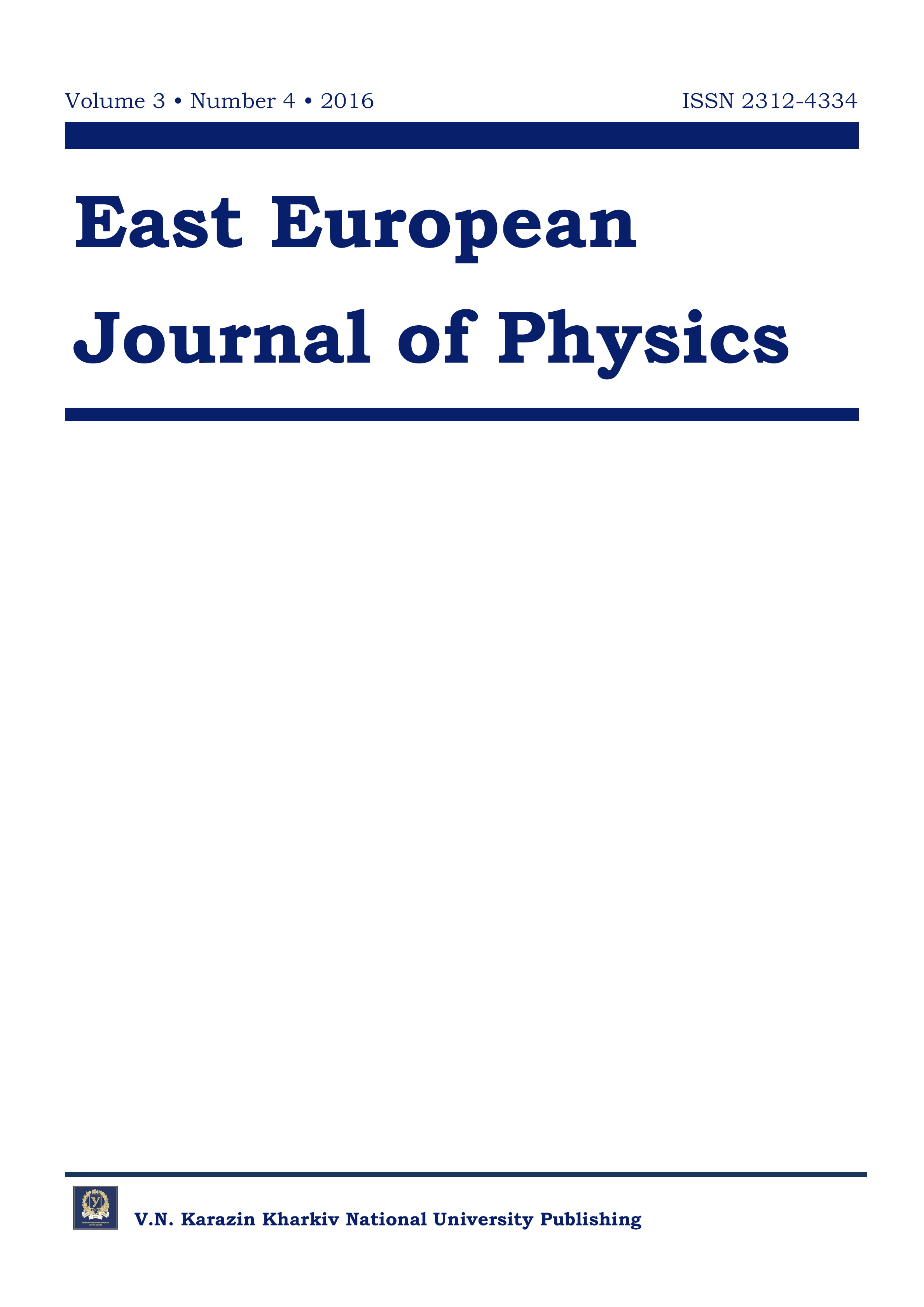Thermodynamics of the Fermi Gas in a Quantum Well
Abstract
For the ideal Fermi gas that fills a quantum well confined by two parallel planes, there are calculated the thermodynamic characteristics in general form for arbitrary temperatures, namely: the thermodynamic potential, energy, entropy, equations of state, heat capacities and compressibilities. The distance between planes is considered as an additional thermodynamic variable. Owing to the anisotropy, the pressure of the Fermi gas along and transverse to the planes is different, so that the system is characterized by two equations of state and a set of different heat capacities. Limiting cases of low and high temperatures are considered. The temperature dependencies of the entropy and heat capacities at low temperatures remain linear, just as in the volume case, and their dependencies on the chemical potential and density undergo jumps at the beginning of the filling of new discrete levels. It is shown that the behavior of thermodynamic quantities with the distance between plates can be either oscillating or monotonic, depending on what quantity is assumed to be fixed: the volume or surface density. For high temperatures the corrections to thermodynamic quantities are obtained, which are proportional to the ratio of the thermal de Broglie wavelength to the distance between planes.
Downloads
References
Ando T., Fowler A.B., Stern F. Electronic properties of two-dimensional systems // Rev. Mod. Phys. − 1982. − Vol. 54. − P. 437-672.
Komnik Y.F. Physics of metal films. − Moscow: Atomizdat, 1979. − 264 p. (in Russian)
Dragunov V.P., Neizvestnyj I.G., Gridchin V.A. Fundamentals of nanoelectronics. − Moscow: Fizmatkniga, 2006. − 496 p. (in Russian)
Vagner I.D. Thermodynamics of two-dimensional electrons on Landau levels // HIT J. of Science and Engineering A. − 2006. − Vol. 3. − P. 102-152.
Freik D.M., Kharun L.T., Dobrovolska A.M. Quantum-size effects in condensed systems. Scientific and historical aspects // Phys. and Chem. of Solid State. − 2011. − Vol. 12. − P. 9-26.
Landau L.D., Lifshitz E.M. Statistical physics, Vol. 5. − Oxford: Butterworth-Heinemann, 1980. − 544 p.
Shaginyan V.R., Popov K.G. Strongly correlated Fermi-systems: theory versus experiment // Nanostuctures. Mathematical physics and modeling. − 2010. − Vol. 3. − P. 5-92.
Landau L.D. The theory of a Fermi liquid // Sov. Phys. JETP. − 1957. − Vol. 3. − P. 920-925.
Pines D., Nozières P. The theory of quantum liquids, Vol. I. − New York: Benjamin, 1966. − 149 p.
Migdal A.B. Theory of finite Fermi systems and applications to atomic nuclei. − Moscow: Nauka, 1983. − 432 p. (in Russian).
Tomonaga S. Remarks on Bloch’s method of sound waves applied to many-fermion problems // Progr. Theor. Phys. − 1950. − Vol. 5. − P. 544-569.
Luttinger J.M. An exactly soluble model of a many-fermion fystem // J. Math. Phys. − 1963.− Vol. 4. − P. 1154-1162.
Fröhlich H. Die spezifische wärme der elektronen kleiner metallteilchen bei tiefen temperaturen // Physica. − 1937. − Vol. 4. − 406-412. (in German)
Lifshits I.M., Kosevich A.M. On the theory of magnetic susceptibility of thin metal layers at low temperatures // DAN SSSR. − 1953. − Vol. XCI (4). − P. 795-798.
Lifshits I.M., Kosevich A.M. On oscillations of thermodynamic quantities for degenerate Fermi gas at low temperatures // Izv. AN SSSR, Ser. Fiz. − 1955. − Vol. 19 (4). − P. 395-403.
Poluektov Yu.M. Conditions of existence of oscillatory phenomena in an electron gas // Russ. Phys. J. − 2008. − Vol. 51. − P. 568-577.
Abramowitz M., Stegun I. (Editors), Handbook of mathematical functions. − Moscow: Nauka, 1979. − 832 p.
Authors who publish with this journal agree to the following terms:
- Authors retain copyright and grant the journal right of first publication with the work simultaneously licensed under a Creative Commons Attribution License that allows others to share the work with an acknowledgment of the work's authorship and initial publication in this journal.
- Authors are able to enter into separate, additional contractual arrangements for the non-exclusive distribution of the journal's published version of the work (e.g., post it to an institutional repository or publish it in a book), with an acknowledgment of its initial publication in this journal.
- Authors are permitted and encouraged to post their work online (e.g., in institutional repositories or on their website) prior to and during the submission process, as it can lead to productive exchanges, as well as earlier and greater citation of published work (See The Effect of Open Access).








